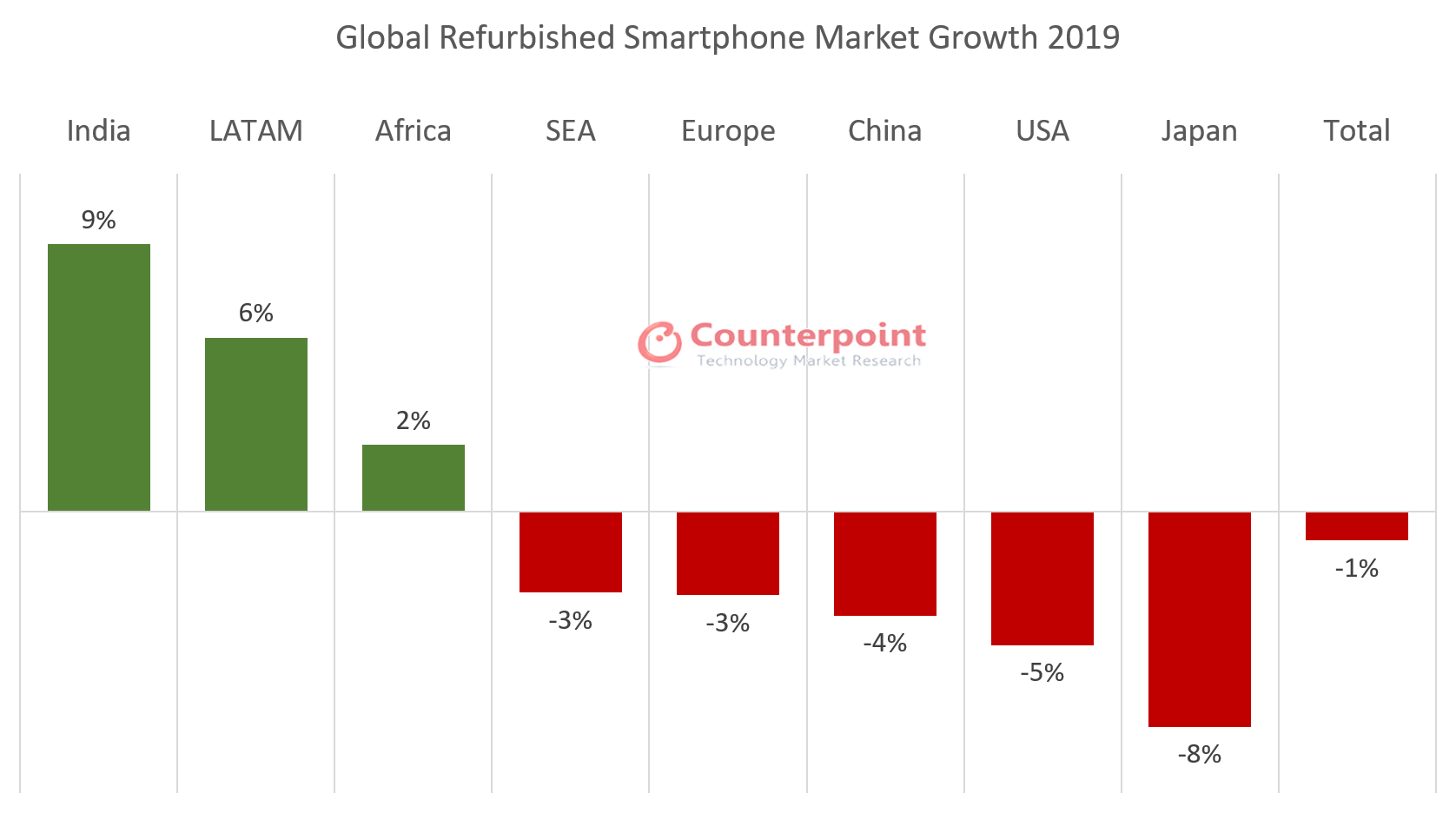According to the latest research from Counterpoint’s Refurbished Smartphone Tracker, the global market for refurbished smartphones declined 1% YoY in 2019 reaching just over 137 million units.
The latter half, especially the fourth quarter the market grew, as Apple upgrades remained strong. However, a 1% increase during the second half of the year was not able to offset the decline in the first half.
Commenting on the market dynamics, Jeff Fieldhack, Research Director at Counterpoint Research noted, This is the first time in the last four years that the refurbished market has declined for the full year. The trend is mainly linked with the downturn in new smartphone sales in key regions like the US, China, and Europe. The sell-through in these regions combined declined 6% YoY during 2019. The upgrades in the premium segment also remained slow, as users continue to hold on to their devices and replacement cycles lengthen.
Jeff Fieldhack added, Premium devices are key to refurbished device volumes in mature economies. China, the largest market for refurbished devices, declined 4% YoY during the year. This was due to the combination of a sluggish economy and the fact that it is harder for players within the refurbished market ecosystem in China to make a profit. The China-US trade tensions have also affected the secondary market as many large players are being much more cautious on purchases. Many of the smaller players in the ecosystem have seen growth, but it was not the case with the larger players.

Commenting on these emerging regions, Varun Mishra, Research Analyst at Counterpoint Research, added, “The refurb ecosystem in these economies is at a nascent stage. In terms of smartphones, these markets remain underpenetrated. Many users are looking for affordable devices to come online.
The transition from feature phones to smartphones and the aspiration of premium devices at an affordable price point continue to fuel growth in these markets. There is also the ongoing transition of the refurb segment from the unorganized sector to organized in countries like India which is opening opportunities. There still needs to be more consumer awareness, standardization in processes, and quality assurance to build consumer trust to fully tap the market potential in these regions. However, going forward, because of COVID-19, the growth of the segment will be impacted in 2020, he added.
Other key themes in the refurbished market:
- Apple and Samsung continued to dominate the secondary market in 2019. Flagship models continue to hold values strongly and hence are also preferred by the overall ecosystem players.
- Apple continues to foster its trade-in and insurance programs. This also makes sense for Apple as it has been focusing on its service segment. The experience of these services is more enriched with the newer hardware, and a strong trade-in program can help users upgrade.
- Samsung’s Galaxy S series is the main driver for Samsung. The company is getting more aggressive with buy-back programs and adding more repair partnerships. Certified Pre-Owned volumes are likely to increase in 2020. This area has been surprisingly low in 2019.
- Huawei’s strength in new sales and brand building efforts has helped it increase its presence within the used/refurbished market. But the US sanctions are likely to hurt sales and the brand outside of China in 2020 unless an agreement is made within a China-US trade deal.
- There has also been an evolution of the repair market especially in the US and Europe, which is also shaping the refurb industry. The Right to Repair bill, which has now been accepted in over 25 US states, is also driving this trend.
























